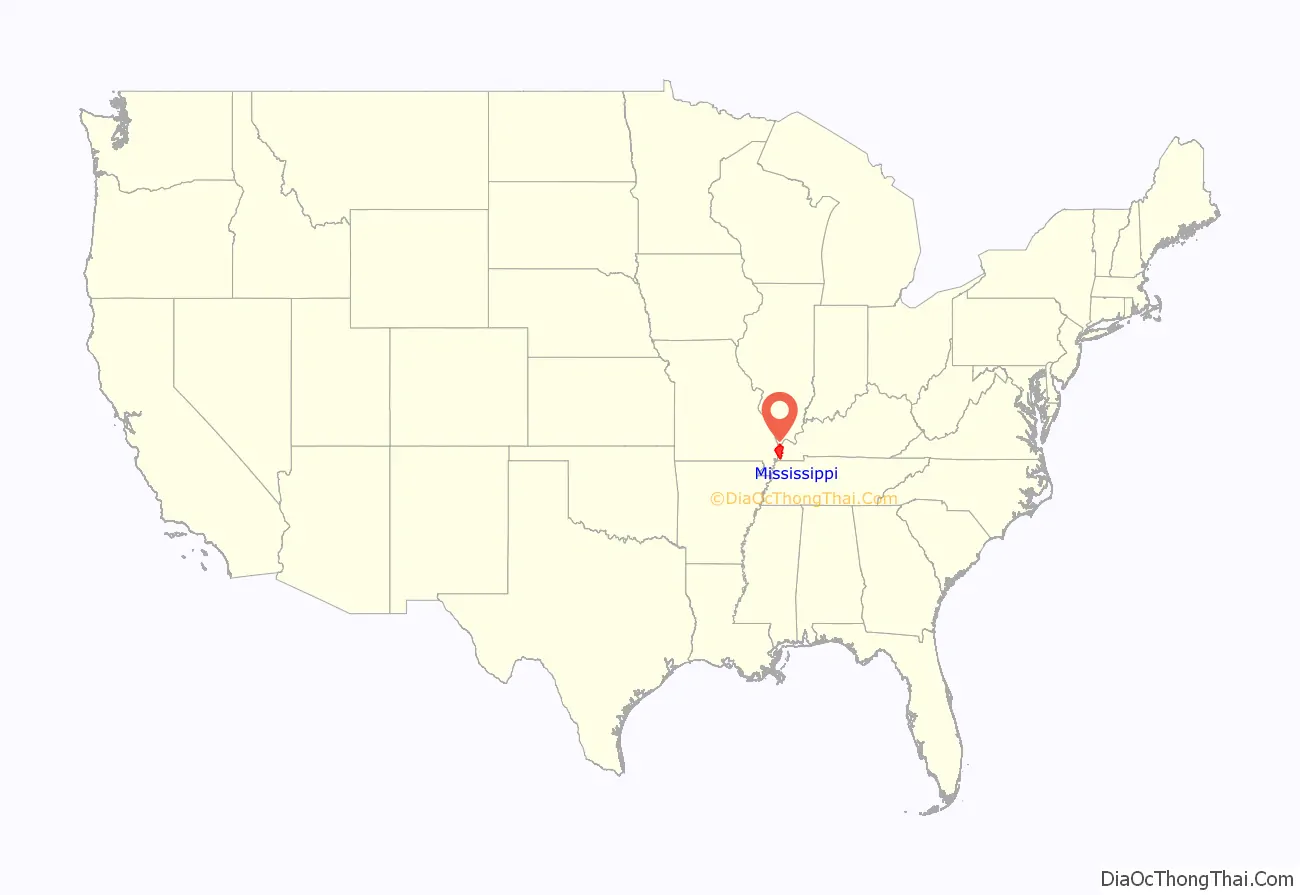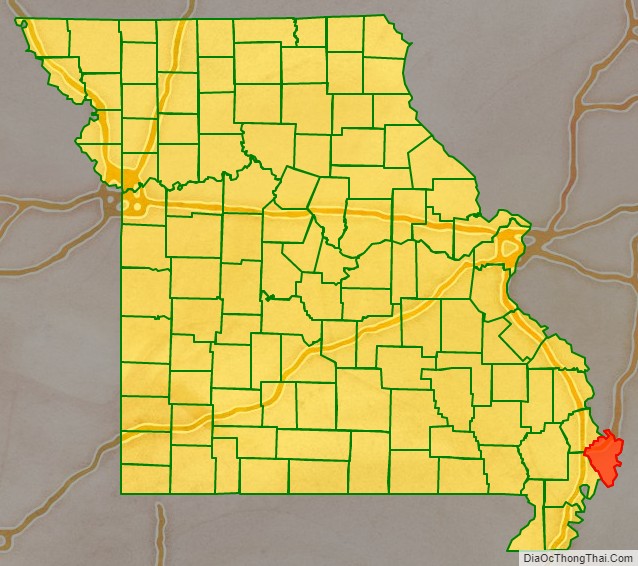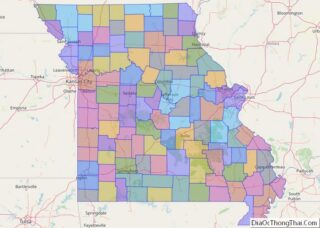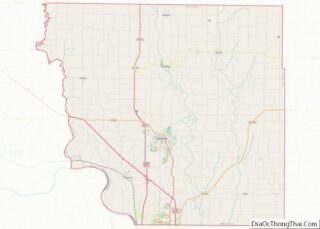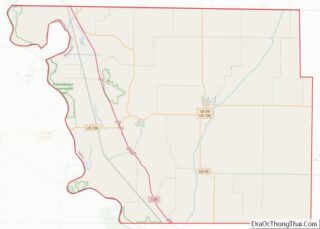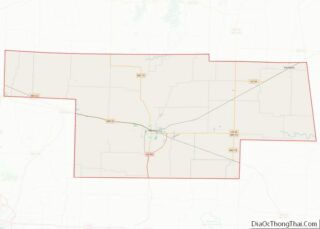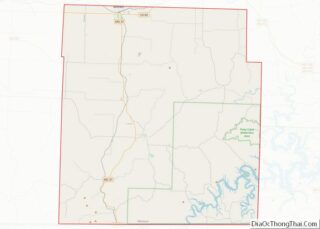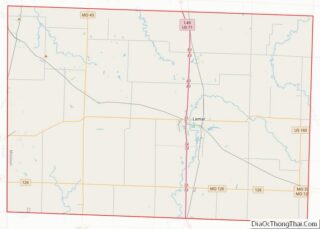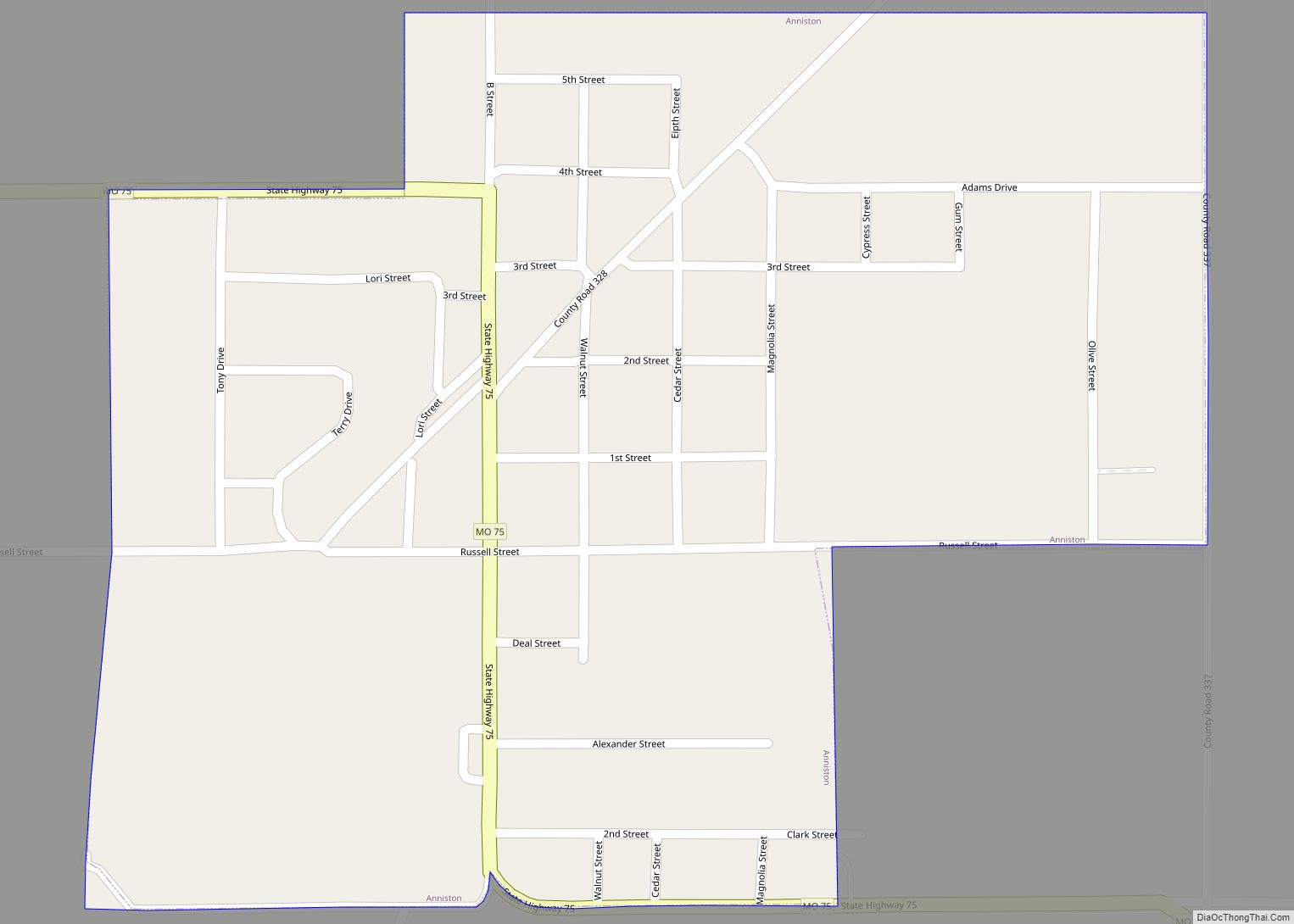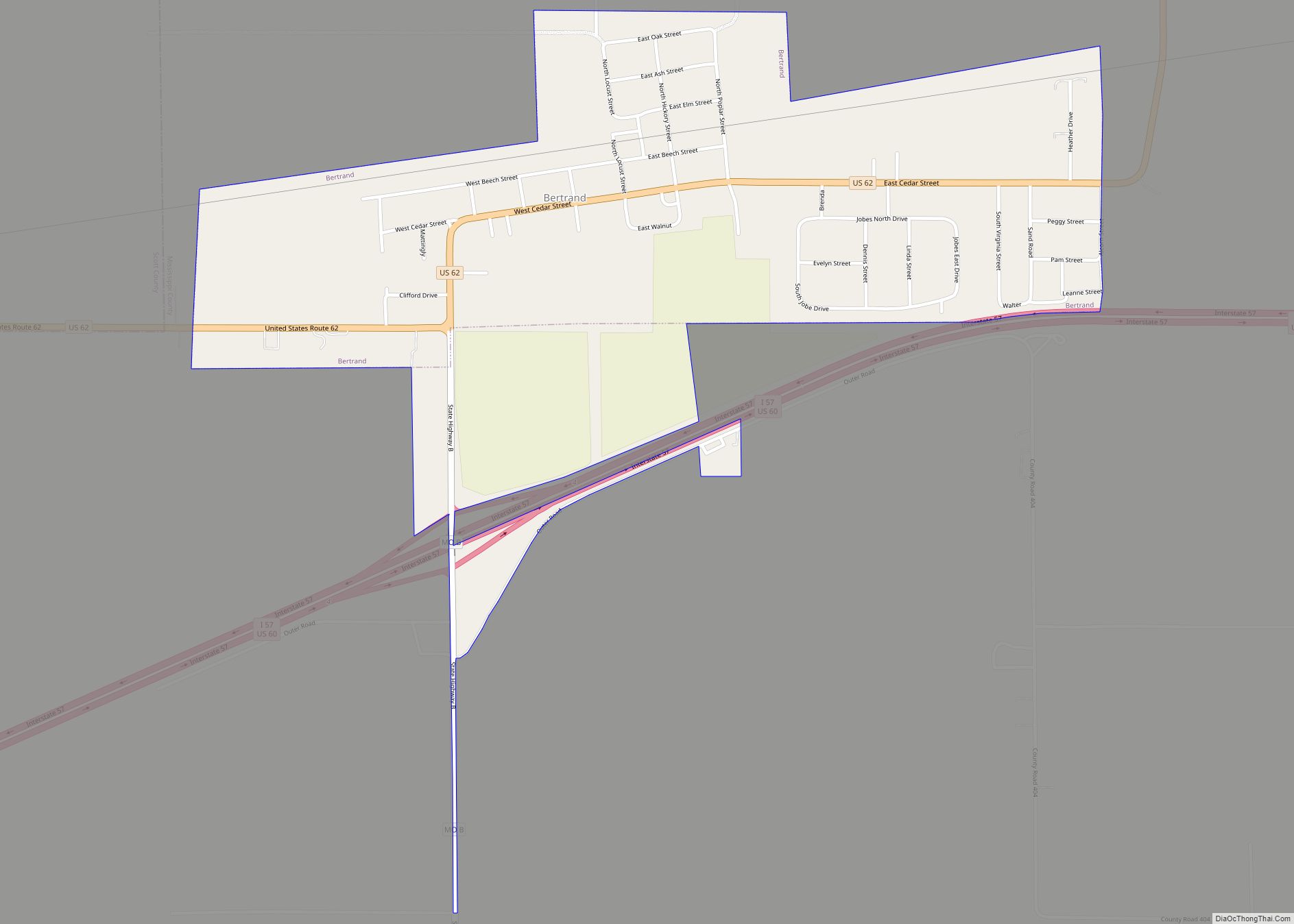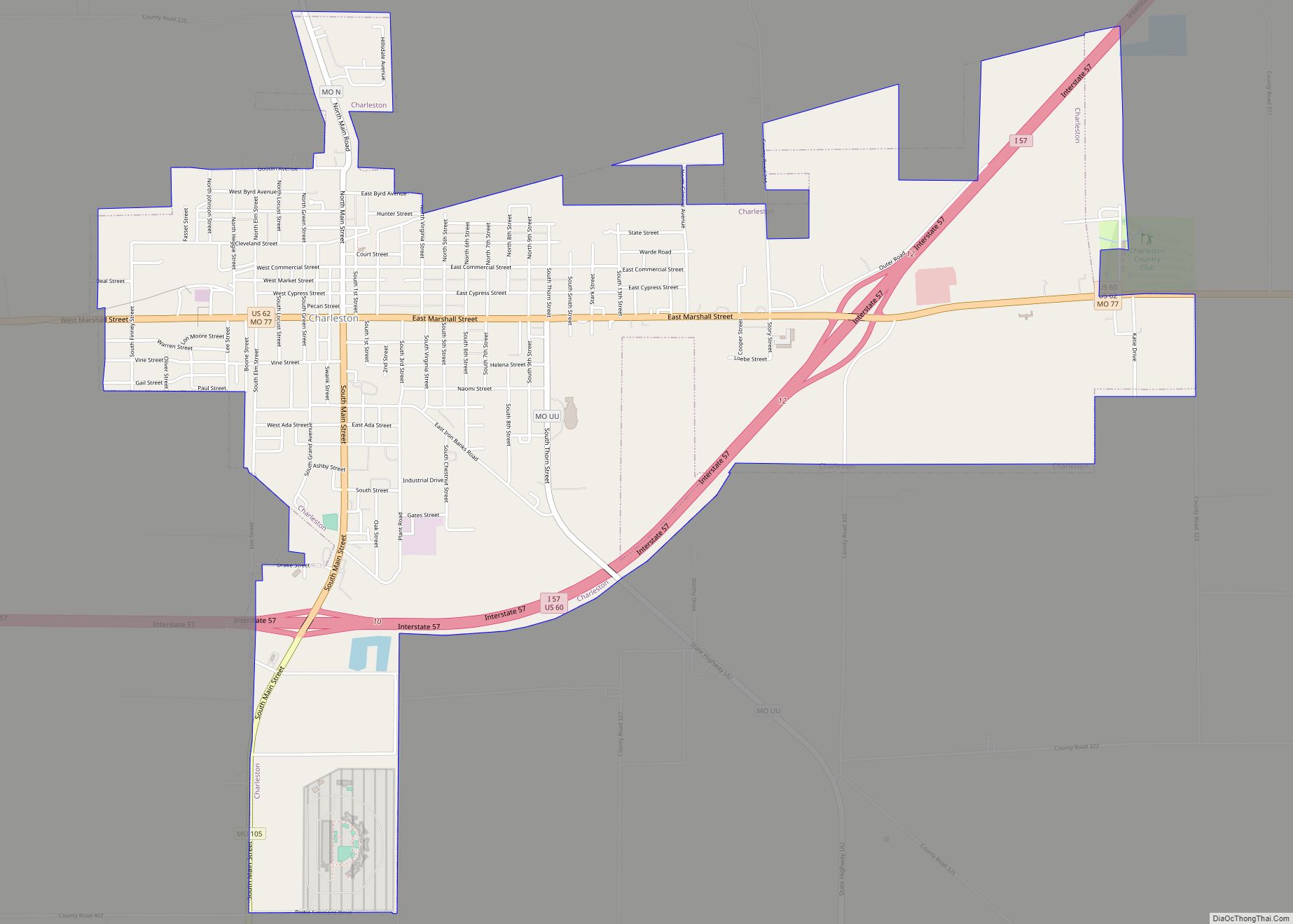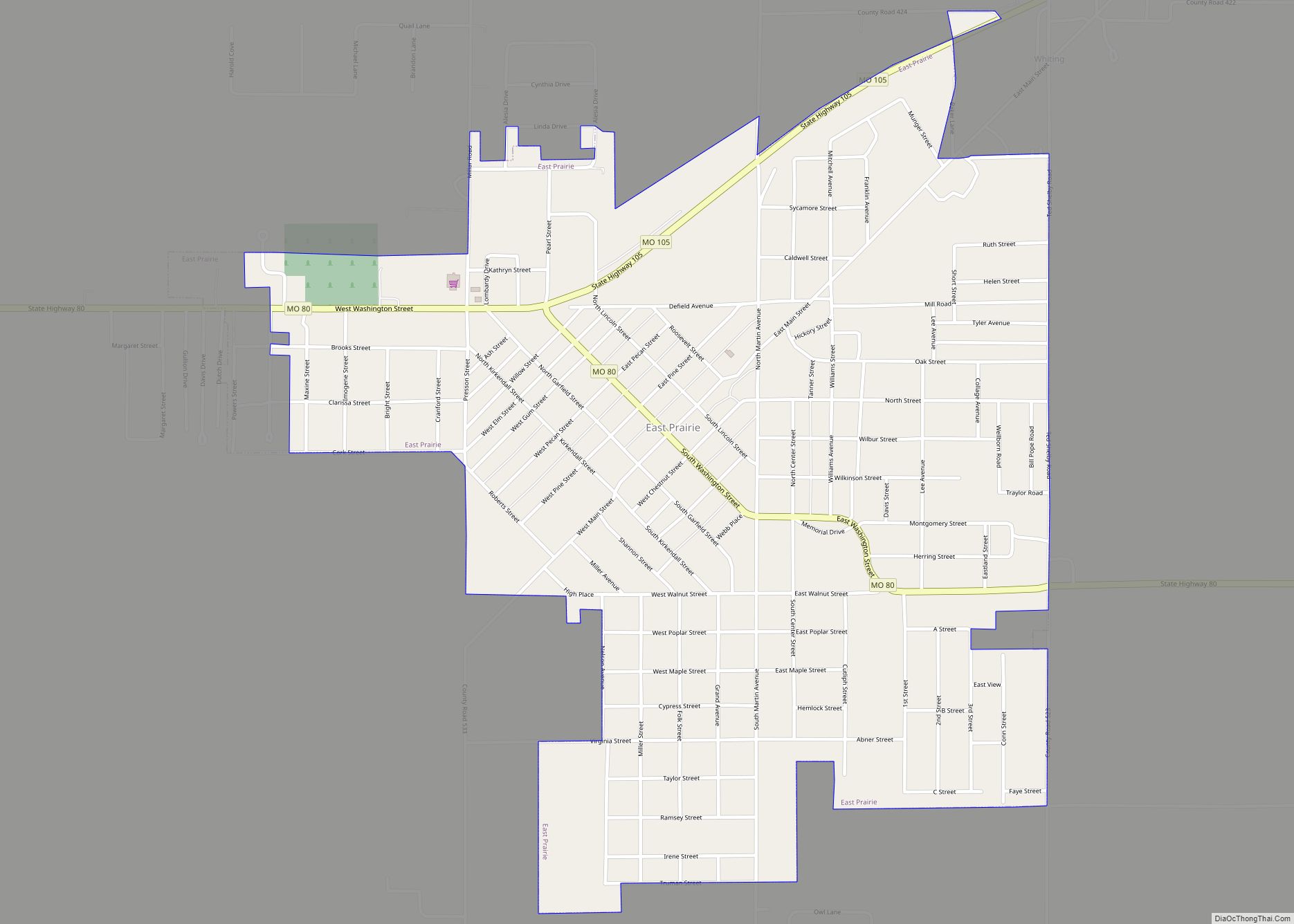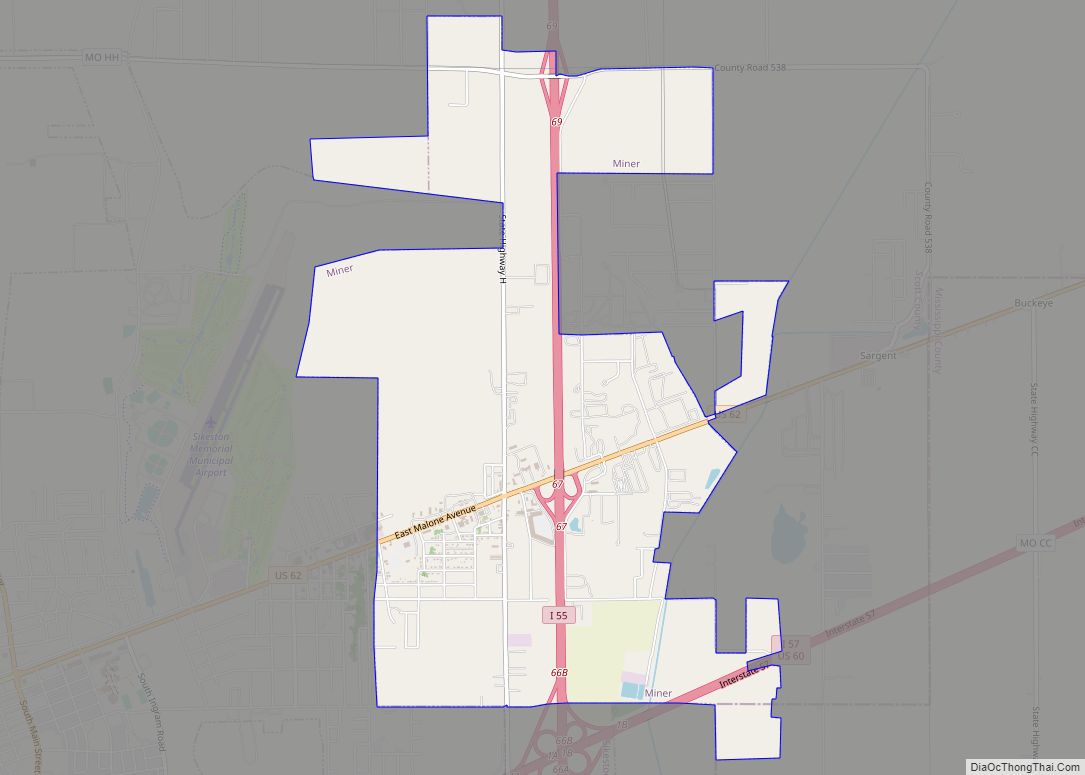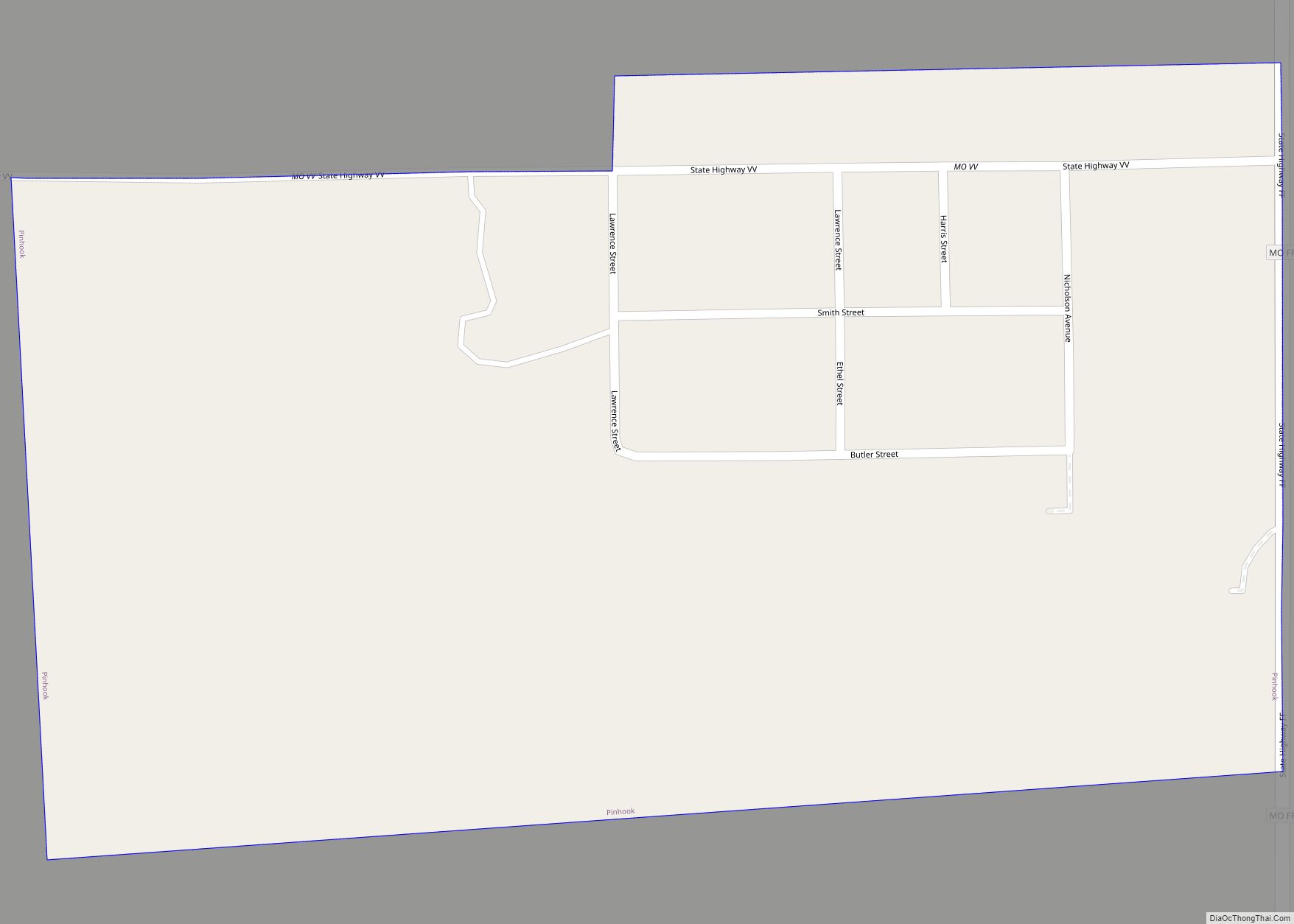Mississippi County is a county located in the Bootheel of the U.S. state of Missouri, with its eastern border formed by the Mississippi River. As of the 2020 census, the population was 12,577. The largest city and county seat is Charleston. The county was officially organized on February 14, 1845, and was named after the Mississippi River.
| Name: | Mississippi County |
|---|---|
| FIPS code: | 29-133 |
| State: | Missouri |
| Founded: | February 14, 1845 |
| Named for: | Mississippi River |
| Seat: | Charleston |
| Largest city: | Charleston |
| Total Area: | 429 sq mi (1,110 km²) |
| Land Area: | 412 sq mi (1,070 km²) |
| Total Population: | 12,577 |
| Population Density: | 29/sq mi (11/km²) |
| Time zone: | UTC−6 (Central) |
| Summer Time Zone (DST): | UTC−5 (CDT) |
| Website: | Mississippi County, Missouri |
Mississippi County location map. Where is Mississippi County?
History
Mississippi County is located in what was formerly known as “Tywappity Bottom,” a vast floodplain area bordered by the Scott County Hills on the north, St. James Bayou on the south, the Mississippi River on the east, and Little River on the west.
In 1540, the Spanish explorer Hernando De Soto penetrated to the Arkansas River and perhaps well into present-day southeastern Missouri, which was then populated by various Native American tribes, including the Osage. Under pressure from a constantly advancing white settlement, the Native Americans gradually retreated westward. The area of southeastern Missouri was noted for its level swampy lowlands, subject to the seasonal flooding of the Mississippi River, which had resulted in extremely fertile soil.
By 1820 American pioneers, many migrating from the southern states, had settled most of the present counties of southeastern Missouri. The settlers were primarily farmers who came from Illinois and the states of the Upper South: Virginia, Kentucky, and Tennessee. They were drawn by the fertile and cheap lands found in the area of present-day Charleston, Missouri. Cotton was cultivated through the 19th century, and the planters depended on enslaved African-American workers before the Civil War and freedmen afterward. There were marked adjustments as people adjusted to the free labor market.
The first American settlers reached what became Charleston in 1830. Seven years later, Thankful Randol sold Joseph Moore 22½ acres of land. Moore used it to lay out a plan for the city of Charleston. Its original boundary was 12 blocks square – four north and south, and three east and west. The Original Plat was filed on May 20, 1837. The General Assembly passed an act to incorporate the city of Charleston on March 25, 1872.
During the late 19th and early 20th centuries, violence increased against black Americans as the state disfranchised minority voters and enforce the Jim Crow segregation laws. Four African Americans were lynched in Mississippi county, the second-highest number in the state and tied with Callaway County. Three of these murders took place in the county seat of Charleston. The fourth man was killed in Belmont, Missouri in 1905. Sam Fields and Robert Coleman were lynched in Charleston on July 3, 1910, allegedly for committing murder and robbery. The joint lynching was witnessed by a crowd of about 1,000. Roosevelt Grigsby was lynched in Charleston in December 1924 by a mob of 200, who accused him of attempting to rape a woman.
At the turn of the 20th century, the virgin forests attracted timber barons. Following the clearing of the timber, the state assisted in the construction of levees, forming drainage districts to redevelop the land. As hundreds of miles of levees and dikes were constructed within the Little River Drainage District, thousands of acres of land were drained and “reclaimed” for agricultural use. The reclaimed land, highly fertile due to centuries of flooding from the Mississippi River, was cultivated for cotton, corn, and wheat. Since the late 20th century, soybeans and rice have been important commodity crops and are grown on an industrial scale.
Mississippi County Road Map
Geography
According to the U.S. Census Bureau, the county has a total area of 429 square miles (1,110 km), of which 412 square miles (1,070 km) is land and 17 square miles (44 km) (4.0%) is water.
Adjacent counties
- Alexander County, Illinois (north)
- Ballard County, Kentucky (northeast across the Mississippi River)
- Carlisle County, Kentucky (east across the river)
- Hickman County, Kentucky (southeast across the river)
- Fulton County, Kentucky (south across the river)
- New Madrid County (southwest)
- Scott County (northwest)
Mississippi County has borders across the river with four Kentucky counties, but it has no direct highway connection between any of them due to the mile-wide barrier of the river in this area. None of the four Kentucky counties that border Missouri has any direct highway connection with Missouri. Kentucky and Missouri are the only two U.S. states to border each other, even across a major river, without a direct highway connection between them. This reflects the relatively low populations among the river counties on both sides, which are largely rural in character. In early 2016, Mississippi County was declared as the poorest county in Missouri.
Major highways
- Interstate 57
- U.S. Route 60
- U.S. Route 62
- Route 75
- Route 77
- Route 80
- Route 102
- Route 105
